Project Update (Part One): Community Engagement
- To inspire visitors (actual and virtual) to engage with the natural heritage of chalk grassland.
- To bring to life the teaching and learning of STEM subjects through ‘real world learning’ opportunities; offering enquiry-led curriculum content, and scope for independent post 16 and Higher Education study.
- To target health promoting engagement from a wide range of day visitors, with specific focus on people resident in south Salisbury lower income neighbourhoods.
- To provide opportunities to learn new skills through environmental conservation volunteering.
Community Engagement: General Public
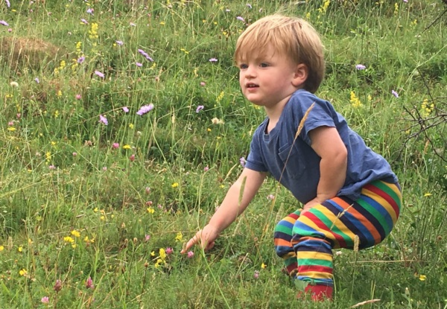
A wide range of events have been delivered to the general public throughout the project to date, including: hand harvesting wildflower seed and sowing the collected seeds onto the arable reversion and chalk butterfly bank; building bird and bat boxes during the school holidays for families to increase nesting opportunities for wildlife at home; talks about the wildlife and archaeology of the site to walking groups to enhance their visits to the reserve; and local artists have even delivered wildflower embroidery and feltmaking classes for the public to connect to the reserve in a different way.
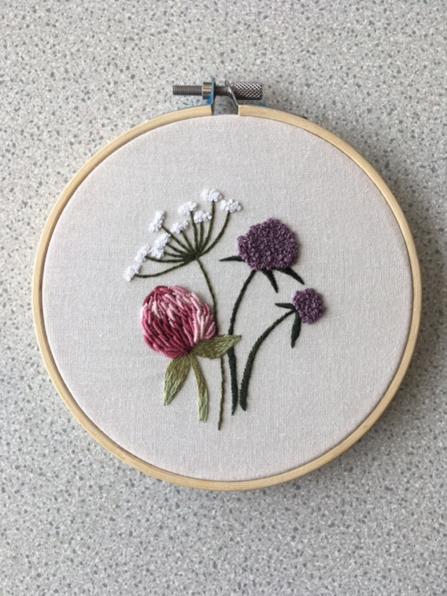
In addition to these activities, the project team have delivered a number of outreach events with hundreds of people in Salisbury and the surrounding areas planting wildflowers to increase feeding opportunities for pollinators in their gardens.
Over 9000 members of the public have engaged with the project through this programme of activity to date, including virtual visitors who have attended online talks and workshops.
Education
Educational sessions have provided learning opportunities both in and outside of the classroom, and on site at the reserve, for children and young people to engage with Wiltshire’s chalk heritage.
Pupils from Coombe Bissett primary school have created their very own mini chalk butterfly bank in their school grounds which was sowed with wildflower seeds collected from Coombe Bissett Down nature reserve.
Thank you so much for an amazing afternoon…the children were buzzing…what an amazing resource we have 10 minutes from school
Some school groups have even taken part in fossil hunting to learn more about the formation of rocks to link to their science curriculum. Educational lambing sessions have also been a popular activity for schools, as children have the opportunity to meet livestock, and learn more about farming practices and textile production.
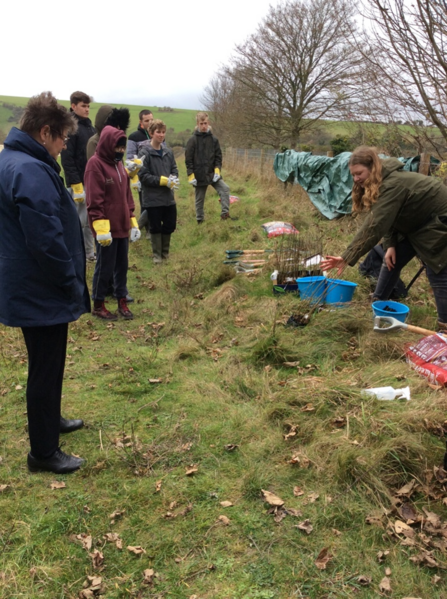
Higher education students have taken part in research placements (you can read one student’s blog post about his research into bees here) and Wiltshire College students have learnt new skills and achieved qualifications during their practical conservation tasks on site, including the planting of a new hedgerow to provide more nesting and feeding opportunities for birds and small mammals at the reserve, as well as plug planting the butterfly bank with horseshoe vetch, the sole foodplant of the Adonis blue butterfly.
To date the project has delivered 30 qualifications in practical conservation skills, 9 research placements and 29 educational sessions to 770 students.
Community Engagement: The Friary
Engagement work is not just delivered at the nature reserve; Coombe Bissett Down is also taken on tour to other areas! Outreach work has been delivered at the Friary estate in Salisbury.
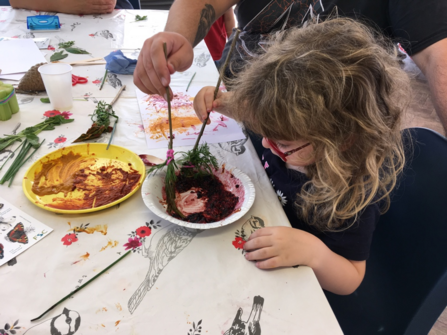
Project staff have been working with Salisbury City Council’s community development team to connect residents to the Friary Community Garden and to improve it for the benefit of wildlife and residents. Children have built bug hotels, butterfly and bird feeders, planted spring bulbs and even grown their own vegetables in windowsills at home to later plant in the garden.
During the first lockdown, weekly nature themed activity packs containing arts and crafts, chalk grassland species themed colouring sheets and even seeds and compost continued engagement with Friary residents whilst sessions in person could not be delivered. Activity packs were delivered weekly to 50 families; a total of 900 activity packs were produced from March to September 2019.
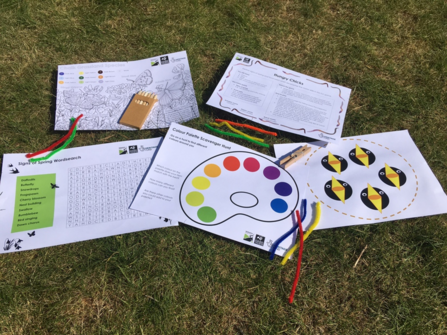
During the brief window where activities could take place between the first and second lockdowns, children took part in a minibeast hunt and wildlife survey, identified autumn leaves and planted spring bulbs in the community garden to achieve a Young Naturalist Award - an award developed during the project to recognise the achievements of children and young people participating in conservation activities.
So far work with the Friary to date has included:
- 2 visits to the nature reserve
- 6 family events
- 9 art and nature club sessions for older residents
- 9 Young Naturalist Awards
- 900 nature themed activity packs delivered alongside food parcels over 18 weeks to 50 vulnerable families
Volunteers
And of course, all this work would not be possible without the project’s team of volunteers. From administration and learning assistants, to reserve management roles assisting with practical habitat management tasks such as planting trees, harvesting seeds and conducting wildlife surveys.
During the project the following volunteer opportunities have taken place:
- 34 practical conservation tasks with 156 volunteers (including 6 hedge planting sessions with 45 volunteers)
- 5 grasslands monitoring and surveying training sessions delivered to 62 people
- 4 butterfly and moth identification sessions delivered to 43 people
Digital Engagement
Whilst the restrictions around Covid hindered delivering activities on site in year 3 of the project, the situation did however present opportunities to engage with audiences in a new and accessible way.
The focus of the project changed to designing and creating free online resources from chalk grassland wildflower quizzes to themed colouring sheets, wildlife factsheets and even a resource all about the role of cow pats and the biodiversity of species they support, which parents who began teaching children from home could download and use to support their child’s learning and enhance their daily walks.
When the large scale Chalk Celebration event with a programme of talks, guided walks and arts and crafts, planned to take place in July 2019 could not be delivered at the reserve, a week long programme of online talks and workshops was delivered via Zoom, Facebook and YouTube instead. Events included talks about chalk fossils, the future of farming, wildlife gardening and folk tales and workshops included nature yoga, nature photography and botanical illustration (with participants receiving art materials in the post in advance). This was a whole new way of working for Wiltshire Wildlife Trust and was well received with just over 200 people attending events live and nearly 7900 views of the recordings of events.
The project continues to deliver digital engagement as an accessible way to engage with current and new audiences, connecting them to Coombe Bissett Down especially through the cold, dark winter months.

